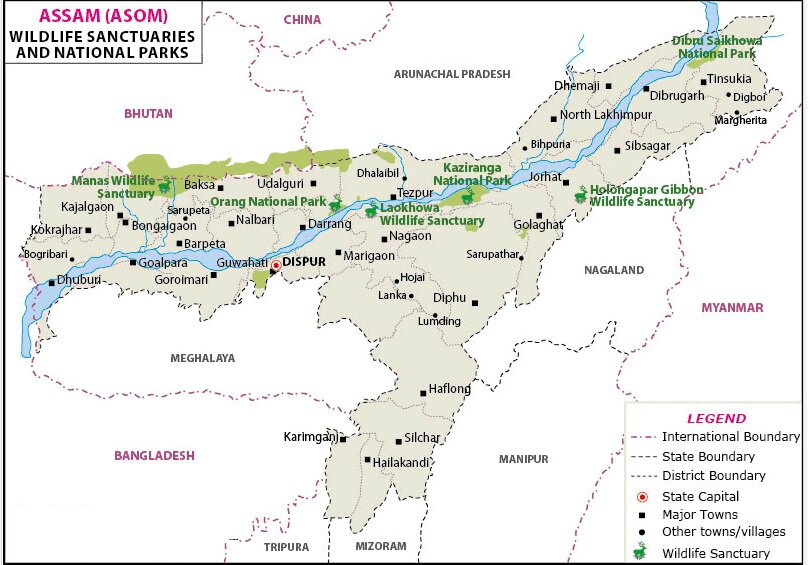
Kaziranga National Park | 04 Jul 2020
Why in News
- According to Kaziranga National Park authorities around 80% of its area has been inundated due to floods.

Key Points
- Location: It is located in the State of Assam and covers 42,996 Hectare (ha). It is the single largest undisturbed and representative area in the Brahmaputra Valley floodplain.
- Legal Status:
- It was declared as a National Park in 1974.
- It has been declared a tiger reserve since 2007. It has a total tiger reserve area of 1,030 sq km with a core area of 430 sq. km.
- International Status:
- Important Species Found:
- It is the home of the world's most one-horned rhinos. Pobitora Wildlife Sanctuary has the highest density of one-horned rhinos in the world and second highest number of Rhinos in Assam after Kaziranga National Park.
- Much of the focus of conservation efforts in Kaziranga are focused on the 'big four' species— Rhino, Elephant, Royal Bengal tiger and Asiatic water buffalo.
- The 2018 census had yielded 2,413 rhinos and approximately 1,100 elephants.
- As per the figures of tiger census conducted in 2014, Kaziranga had an estimated 103 tigers, the third highest population in India after Jim Corbett National Park (215) in Uttarakhand and Bandipur National Park (120) in Karnataka.
- Kaziranga is also home to 9 of the 14 species of primates found in the Indian subcontinent.
- Rivers and Highways:
- The National Highway 37 passes through the park area.
- The park also has more than 250 seasonal water bodies, besides the Diphlu River running through it.
- Other national parks in Assam are:
- Dibru-Saikhowa National Park,
- Manas National Park,
- Nameri National Park,
- Rajiv Gandhi Orang National Park.
Source: TH

